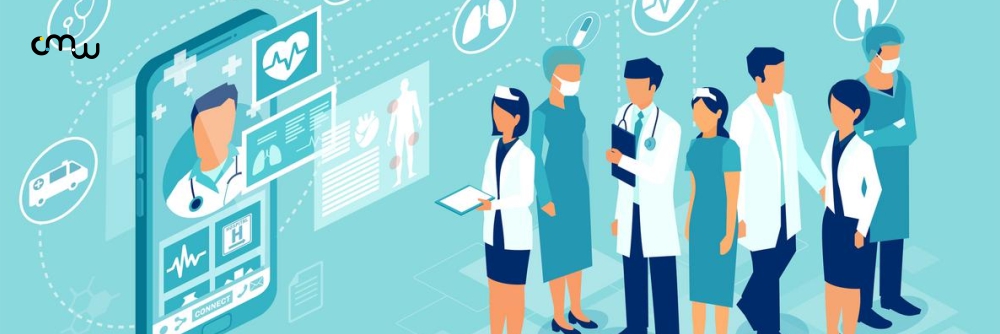Introduction
Branding is not just for big companies. Every company, from solo entrepreneurs to small businesses to large corporations, has a brand. A brand is an overall perception that people have about your company, product, or service. It’s what customers think about when they see your logo or hear your name – it’s how well you present yourself in the marketplace and communicate with customers about what you do. In this article, we're going to share some of our top tips for successful branding in healthcare marketing:
What is a brand?
A brand is a promise you make to your customer. It's what you stand for, and it's how you differentiate yourself from other companies that offer similar products or services.
A brand represents trust, reliability, and quality in the minds of consumers. When people think of a brand, they associate it with a specific image or feeling; if you want to build loyalty around your product or service--and get repeat customers--then creating an emotional connection between them and your brand is critical.
How does branding apply to healthcare marketing?
Brand awareness, brand loyalty, and customer satisfaction are all important aspects of branding. When it comes to healthcare marketing, these three elements play an essential role in creating a positive perception in the minds of customers.
When it comes down to it, everyone wants to feel like they're getting something extraordinary when they buy a product or service--and healthcare is no different. With so many choices out there today (whether you're visiting a doctor's office or shopping online), it's critical for businesses in this industry to stand out from their competitors if they want their customers to come back again and again over time.
Branding helps create that positive perception by creating consistency across all channels so people know exactly what they're getting when they interact with any one piece of communication from your brand -- whether that means visiting one location versus another location, interacting via phone call vs. email vs. social media channel, etc.
How can a brand be developed in the healthcare space?
Brand development is an ongoing process, and it's not just about the logo or website. Branding is about everything you do, including how you interact with patients, staff members, and other stakeholders. The brand should be represented in everything from marketing materials to office environments--and even on social media channels like Facebook or Twitter.
How do you measure success?
Measuring success is an essential part of marketing, and it's important to make sure you're doing it right. There are a few ways that you can measure the effectiveness of your healthcare marketing campaign:
- Sales data
- Customer feedback (surveys)
- Brand awareness/perceptions (polls)
A company’s brand is its most important asset.
A company’s brand is its most important asset. It represents the promise of what you do, who you are, and how you do it. Your brand should be a strategic decision made by your leadership team based on research into what customers want from your business, as well as knowledge about the competition in your industry and how they differentiate themselves from one another.
Branding isn't just about logos or taglines; it's about creating an experience for customers that makes them want to return again and again because they know they'll get what they need from experience--and, more importantly, because they like doing business with you!
Branding in healthcare has to be especially precise.
Branding in healthcare has to be especially precise. Patients are more vulnerable than consumers of other goods and services, so they need to feel confident that the treatment they receive is safe and effective. The emotional aspect of treatment can also play a significant role in how patients perceive their doctors and hospitals--and, therefore, how much trust they put into them. Finally, there's an enormous amount of information available on the internet about healthcare providers; this makes it harder for brands to stand out from each other or build loyalty among consumers.
Patients want to know if you care about them as people, not just patients.
You want patients to feel like they are being listened to and understood. You want them to know that their health is essential to you, as well as the rest of your staff. You also want them to trust you; this is one of the most critical parts of building a solid brand image in healthcare marketing.
Patients will trust you if there are no surprises or hidden fees when they come in for treatment, which means making sure that all prices are clearly listed online, so no one has any surprises when they get there (or later). They'll also trust you if their medical records are kept confidential and secure--and even more importantly if those records actually make sense! This can be hard because doctors often don't have time during appointments themselves; however, there's nothing worse than having no idea what happened during an appointment when trying to follow up instructions from home later on (which can happen more often than anyone would like.
Find your competitive edge.
Finding your competitive edge is one of the most critical steps in developing a brand strategy. The first step is to know your competitors, both within and outside of healthcare. If you're selling the same thing as someone else, then what makes you stand out? What do customers think about when they hear or see your brand name versus someone else's?
Once you've identified what sets you apart from other providers, it's time to think about how that can be leveraged into an effective marketing campaign. This may include:
- A unique value proposition for patients (e.g., "We offer care with compassion.")
- An appealing personality for staff members (e.g., "Our employees are friendly!")
Branding should not be an afterthought in your marketing campaign.
Branding is not just about a logo, and it's about communicating your values and mission. It's about communicating what makes you unique. Your branding should be able to communicate who you are and why people should choose to do business with you over other providers in your space.
A brand can be defined as "the set of intangible attributes that gives an organization or product a distinct position in the minds of customers." In other words, branding helps differentiate one company from another so that consumers know which products they want when they shop or interact with businesses online (or offline). When done well, branding can help businesses stand out against competitors while also reflecting their personality and strengths in a way that resonates with customers--something every company wants!
Make sure your brand and your company are working together to achieve maximum results.
You're an intelligent person, and you know that branding isn't a one-and-done thing. It's a long-term process that requires consistency, and there are no shortcuts.
It can be tempting to try to be everything to everyone, but this is usually not a good idea for your brand or your company. If you try too hard to please everyone all the time, then what will happen? You'll end up making mistakes along the way because of all those different directions at once! Don't let this happen--be sure that both yourself and those who work with/for you understand the importance of having clear goals in mind when developing new products or services (or even rebranding). This will help ensure that everyone remains focused on achieving maximum results through their efforts over time rather than getting distracted by less important things like "what do other people think?"
Conclusion
The healthcare industry is a unique one, with its own set of challenges and opportunities. One thing that all companies in this space should keep in mind is that branding is not just about making sure your logo looks nice or developing a marketing plan; it's also about connecting with patients on an emotional level and building trust through personalized interactions. This means that when you're thinking about how best to brand your company or practice, don't forget about what we discussed here today!









